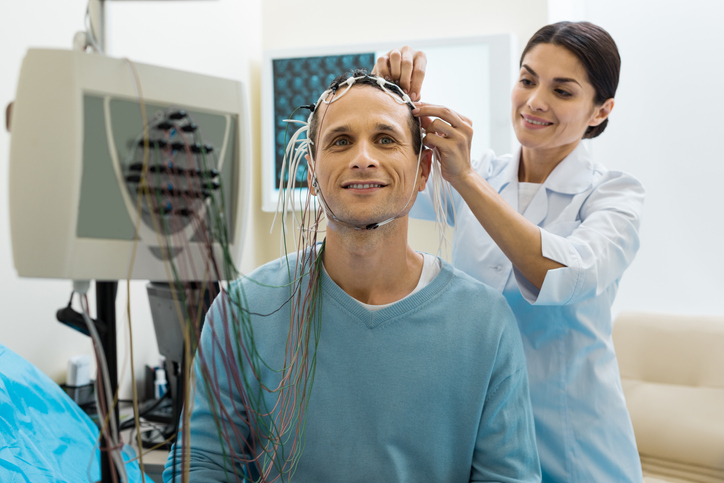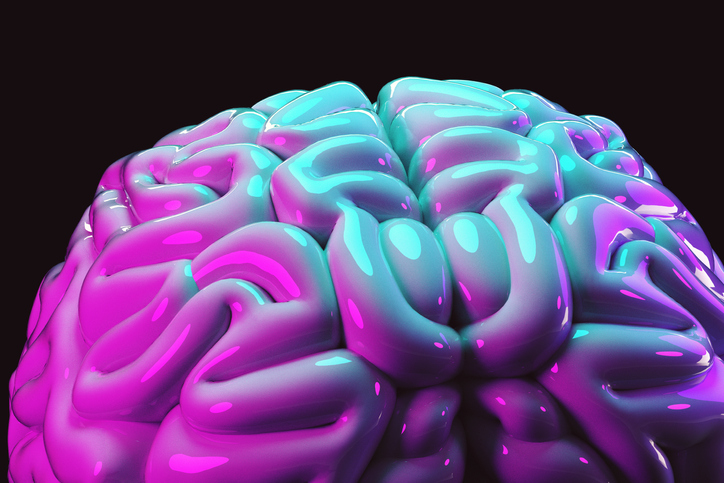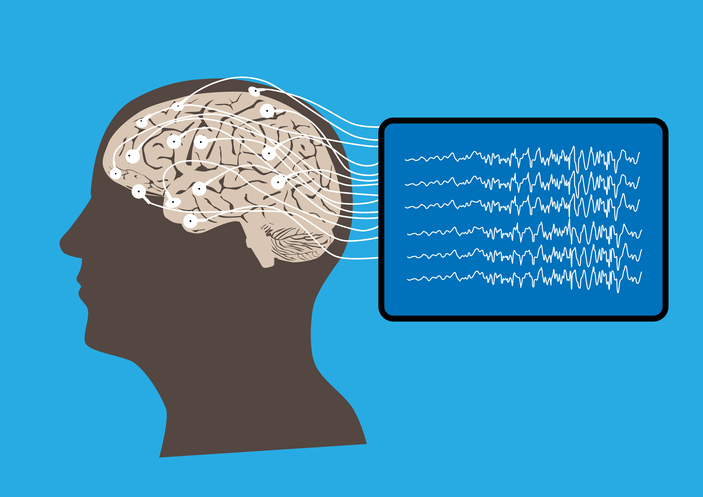How to Be Proactive About Your Brain Health with an EEG

By Joy Stephenson-Laws, JD, Founder
The National Institute of Neurological Disorders and Stroke, a branch of the NIH, refers to the brain as the “crown jewel of the human body.” I have to agree. Just look at a few of these incredible facts about the brain:
- The human brain can generate enough electricity to power a light bulb.
- There are about 100 billion neurons (nerve cells in the brain).
- The brain is the most complex organ of the human body and weighs about three pounds.
- It is also one of the hardest working organs in the body.
- Without our brains, we could not walk, talk, eat, breathe, control our heart rate and so much more.
Obviously, we want to take exceptional care of our brains. The best way to do this is to maintain an overall healthy lifestyle, but we may be missing a critical tool - an EEG.

An EEG, which stands for electroencephalogram, is a test that looks at brain activity (more specifically, electrical activity). It can detect abnormality in your brain waves or electrical activity.
“Your brain’s electrical activity allows you to interpret the world: everything you think, learn, see, touch, smell, taste, or hear causes a change brain activity,” according to an article published by Harvard.
“This means that with too little brain activity, and you can’t think or respond to your surroundings. But a brain that’s too active ends up with seizures.”
If you have never had an EEG, you have likely seen the process at least somewhat reenacted in a movie or TV show. The person receiving the test will look like they have a bunch of cords attached to their head and as if the cords are receiving something as the doctor observes signals on a screen.

What essentially happens during an EEG is that electrodes are placed on the recipient’s scalp. The electrodes can read activity in the brain and detect any abnormalities. It is a safe, noninvasive procedure that may feel odd but should not be painful. How long an EEG will take depends on how long the doctor feels you need to be monitored. Generally speaking, there are three kinds:
- Routine (which lasts around 30 minutes)
- Extended (two to four hours)
- Overnight (7pm until 6pm, the doctor may want to see activity while the patient is sleeping)
“The electrodes detect tiny electrical charges that result from the activity of your brain cells. The charges are amplified and appear as a graph on a computer screen, or as a recording that may be printed out on paper. Your healthcare provider then interprets the reading,” (John Hopkins Medicine).
“During an EEG, your healthcare provider typically evaluates about 100 pages, or computer screens, of activity. He or she pays special attention to the basic waveform, but also examines brief bursts of energy and responses to stimuli, such as flashing lights.”
The results of the EEG are usually available one to two weeks after the procedure is done.

One of the main methods for diagnosing epilepsy, a seizure disorder, is through an EEG. This test may also identify other seizure disorders as well as:
- Sleep disorders (including sleep apnea, restless leg syndrome and insomnia)
- Head injuries and concussions
- Alzheimer's and other forms of dementia
- Tumors
- Traumatic brain injuries and infection or inflammation of the brain
- Stroke
“The EEG may be used to determine the overall electrical activity of the brain (for example, to evaluate trauma, drug intoxication, or extent of brain damage in comatose patients). The EEG may also be used to monitor blood flow in the brain during surgical procedures,” according to John Hopkins Medicine.
Numerous EEG studies also suggest that there are particular brain wave patterns associated with various emotions and activities such as happiness, sleep and creative problem solving. This knowledge has led to the use of EEG studies to enhance these emotions and activities.
So how do we know if we need an EEG?
Unless you have a condition such as epilepsy or have been diagnosed with brain tumors or have experienced a traumatic brain injury, I’m sure many of you reading this have never had an EEG and may have never even heard of one until now. It’s not exactly a required test administered at your yearly doctor’s visit. This does not mean that it is not important.
This is why I stress being proactive about our health by speaking up. Tell your doctor or healthcare provider that you would like to undergo the EEG procedure. Perhaps doing this will determine why you have sleep issues or chronic headaches or may detect unusual brain activity you would not know you have because you were not experiencing symptoms. I think you should most definitely request an EEG if you are experiencing confusion or memory loss.
If you are depressed, anxious, have difficulty sleeping or focusing, then you might want to consider the specialized use of EEGs in the form of neurofeedback to address these issues.
Always be proactive about brain health through nutrition.

I cannot express enough how important it is to be proactive about brain health. We always talk about anti-aging with skincare, but we should really be having the discussion about anti-aging as it relates to the brain. Many people are blessed to live very long lives. We hear about people making it to the age of 100! If we are to be blessed with such longevity, we, of course, would want the best quality of life possible. And with older age, we often see brain issues such as dementia. A great way to reduce the risk of dementia is through a healthy, anti-inflammatory diet. I highly recommend checking out these older pH blogs:
- Be Proactive About The Most Common Form of Dementia - Alzheimer’s Disease
- Fruits & Veggies Will Help Keep Dementia Away
- An Avocado A Day May Help Keep The Cognitive Decline Away!
Also know that making sure you have a healthy balance of essential nutrients like magnesium, is key to maintain healthy brain aging and helping reduce your risk of dementia. Taking routine nutrient tests will determine if you have any nutrient imbalances or deficiencies. And if you do, a competent healthcare professional can work with you on making the necessary dietary changes and recommend good quality supplements if necessary.
Enjoy your healthy life!
Disclaimer: This article is not intended to provide medical advice. Please consult with your doctor or another competent healthcare practitioner to get specific medical advice for your situation.
The pH professional health care team includes recognized experts from a variety of health care and related disciplines, including physicians, attorneys, nutritionists, nurses, and certified fitness instructors. This team also includes the members of the pH Medical Advisory Board, which constantly monitors all pH programs, products, and services. To learn more about the pH Medical Advisory Board, click here.







